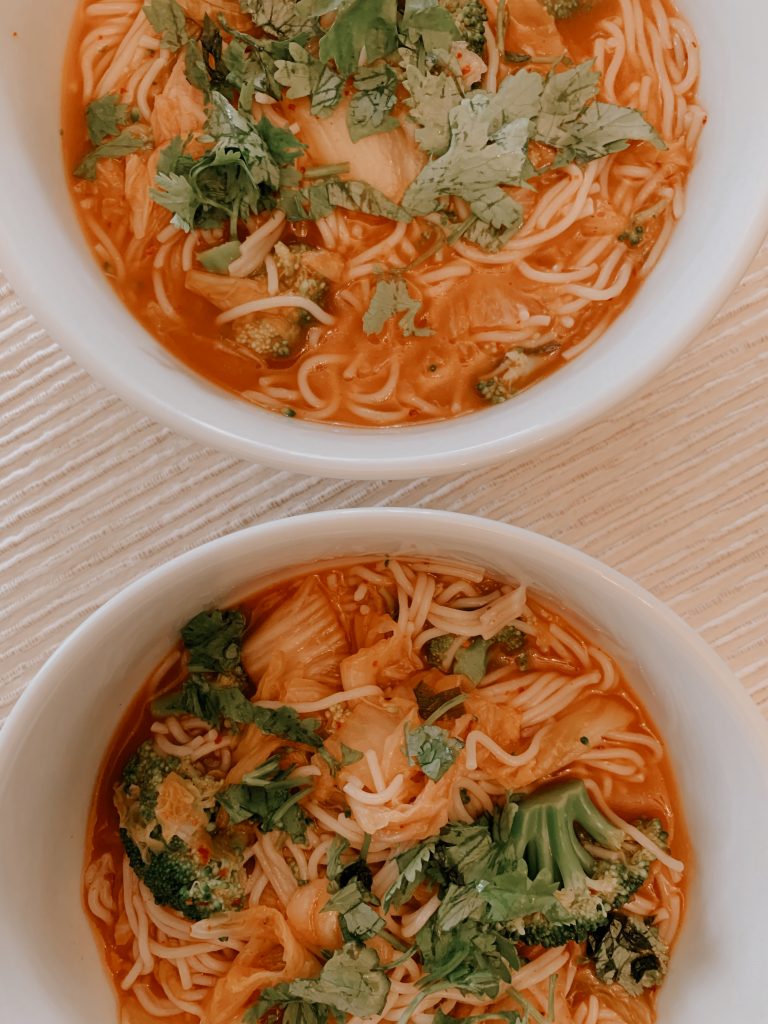
One of my favorite food memories from Denver, CO, several years ago, was stumbling upon a vegan restaurant and trying kimchi stew for the first time. I had tried kimchi straight from the jar before and it was fine, but after trying kimchi stew, I knew that was my favorite way to eat it. I often think about that delicious bowl of goodness balanced with savory, umami, spicy, and sour flavors that I had in that restaurant on a cold Denver day. A couple of months after my delightful discovery, I whipped up my own version at home. I recently made it again with a little twist and thought I would share with you.
Kimchi is the Asian version of German sauerkraut. So if you’re not a sauerkraut fan you might not be a kimchi fan, but I encourage you to try it in a stew. I wouldn’t normally say I am itching for a side of sauerkraut but my mother-in-law recently made it with spices and brown sugar and pan fried and I could have eaten a whole bowl of it! My point? Sometimes, it is not the food but how it is prepared that makes all the difference.
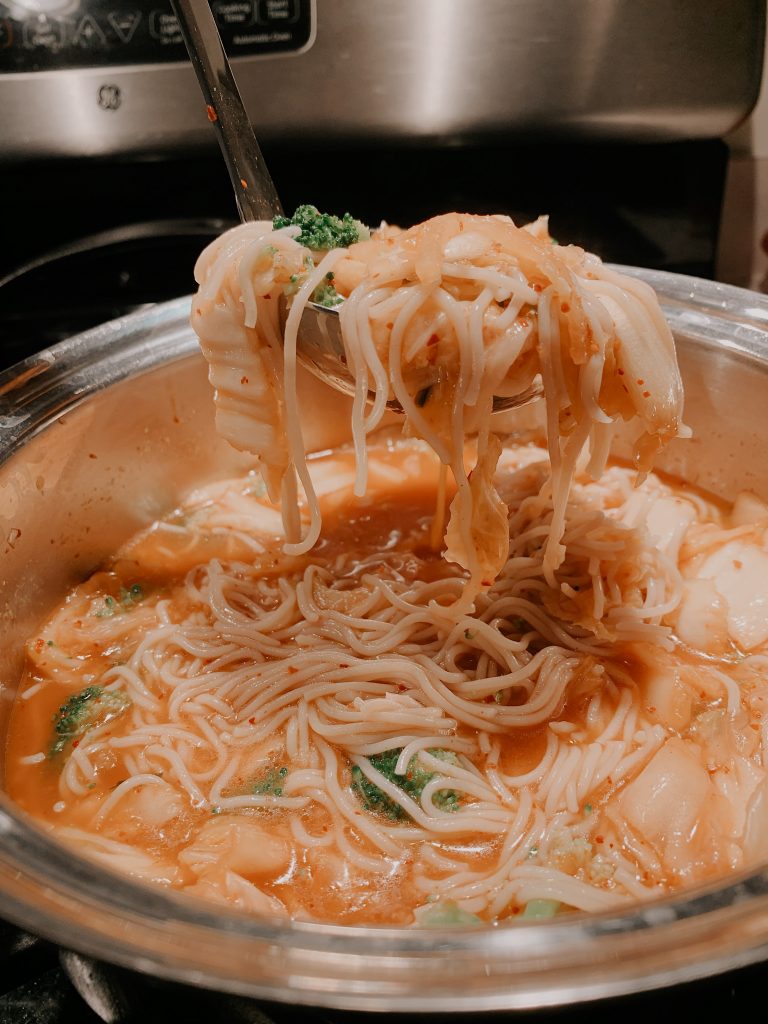
It is quite a simple recipe, the hardest part might finding some new ingredients. Also I would like to note that many Asian recipes are a bit less structured that American or French recipes so you can easily add a little more of this or that or less of this and that for your liking. If you ever had pho, you know what I mean! You make it to taste, which is pretty fun.
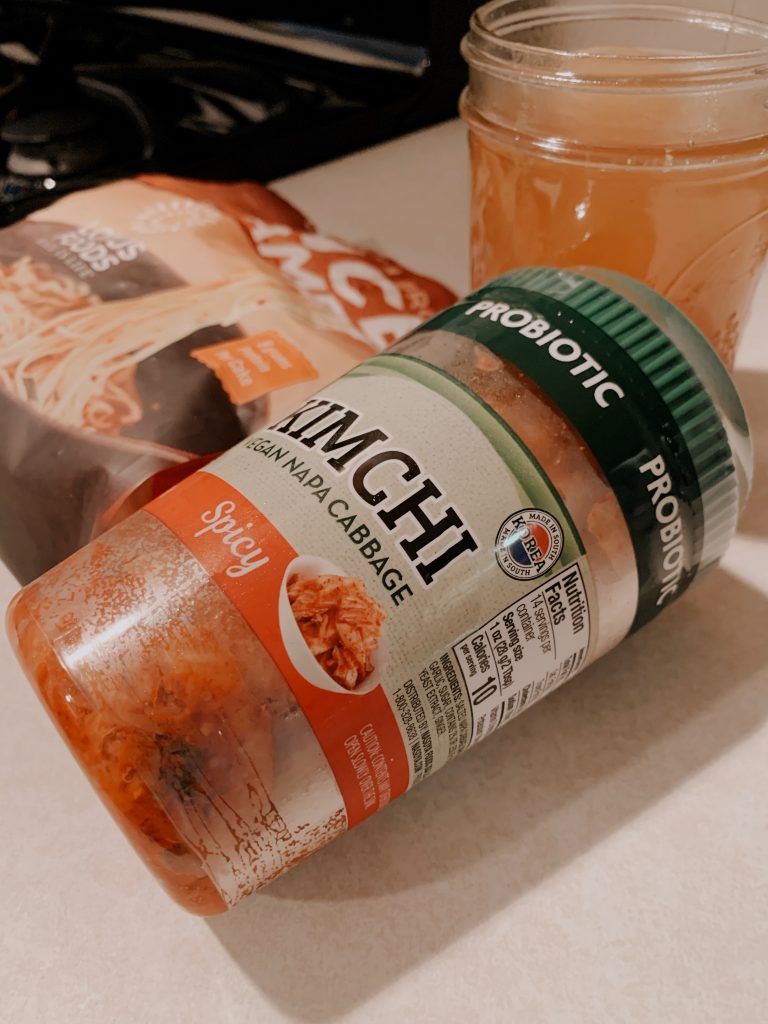
The main ingredients are kimchi (either spicy or mild), gluten free noodles (white or brown rice noodles are best), chicken or bone broth (pre-made or homemade is fine), gluten free soy sauce (or regular if you are not gluten free), and sesame oil. See, that is not too bad – kimchi and rice noodles and sesame oil is the only things you might not have on hand and you can find it in most stores, even Walmart.
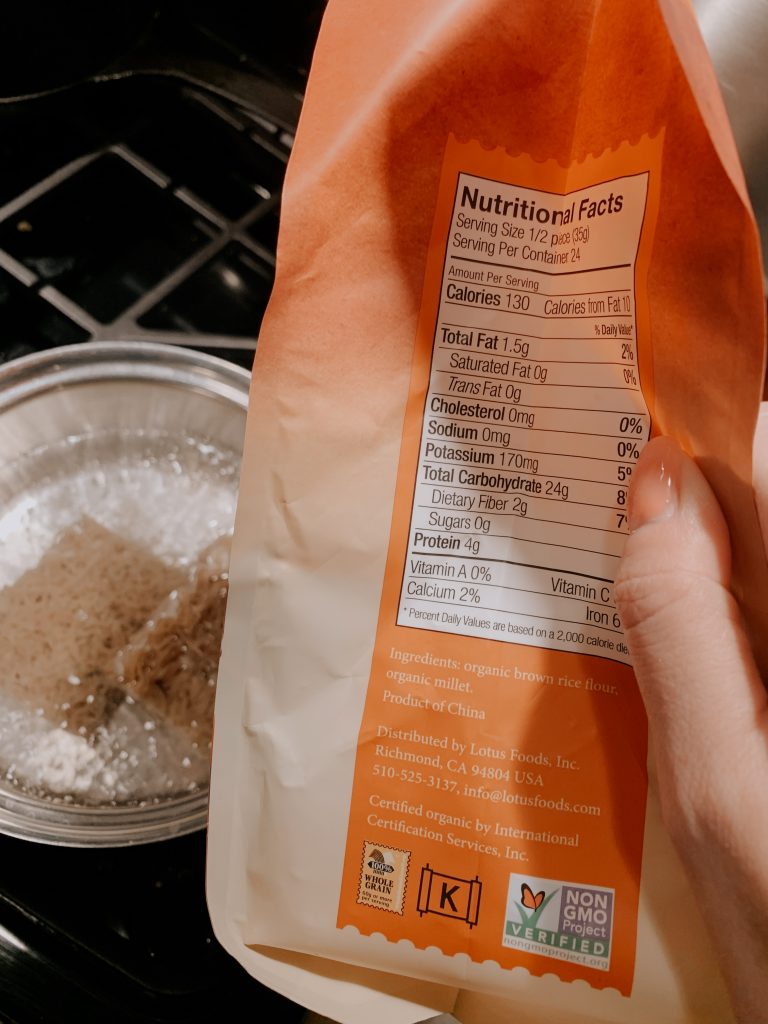
Umami Korean Kimchi Noodle Stew (serves 2 large bowls or 4 smaller “cups”) :
2 cups chicken or vegetable broth 1 jar kimchi (spicy or mild) 2 blocks while or brown rice noodle squares or two handfuls of rice noodles Sesame seed oil Gluten free soy sauce Ginger powder Finely chopped garlic Salt Broccoli or other vegetables (carrots, nappa cabbage, snap peas, boy choy) chopped to bite sized pieces Cilantro Optional: coconut milk or peanut butter
Add 3 cups of water to a pot along with 2 cups of broth.
Add the entire jar of kimchi to pot. (Note: for a true kimchi flavor, add all of the juice with the kimchi as I do, or reserve the juice in the bottom to add in later.)
Next add soy sauce, ginger powder, garlic, and sesame oil. Start with 1/2 tsp of ginger, 1/2 tsp garlic, 1 tbsp sesame oil, and 2 tbsp soy sauce.
Sample a small amount of the broth and add more seasoning or salt as desired. You can also add more water to soften the broth.
Add in broccoli or other veggies and simmer on low until veggies are cooked to desired tenderness. (I like to simmer my kimchi stew for at least 30 minutes for the flavors to melt together)
Check the broth again. If the kimchi stew is too spicy or bold, you can add more soy sauce, a tbsp of peanut butter or a little coconut milk.
Before you are ready to serve, add the noodles to the stew and cook for allotted time according to package.
Top with freshly chopped cilantro.
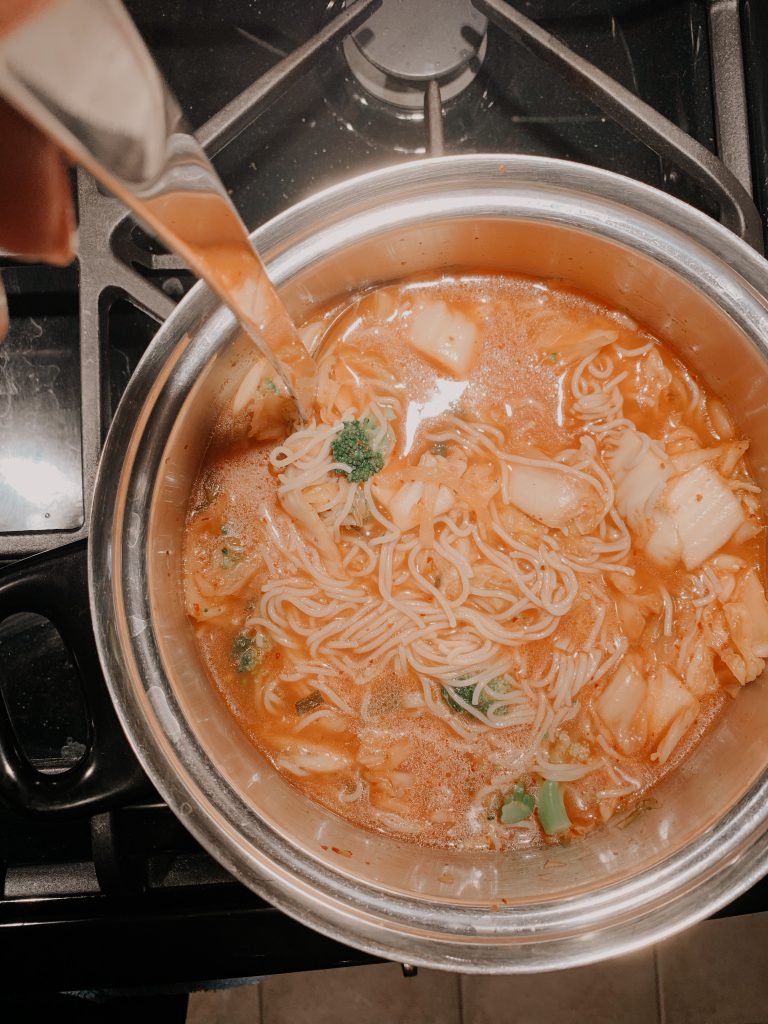
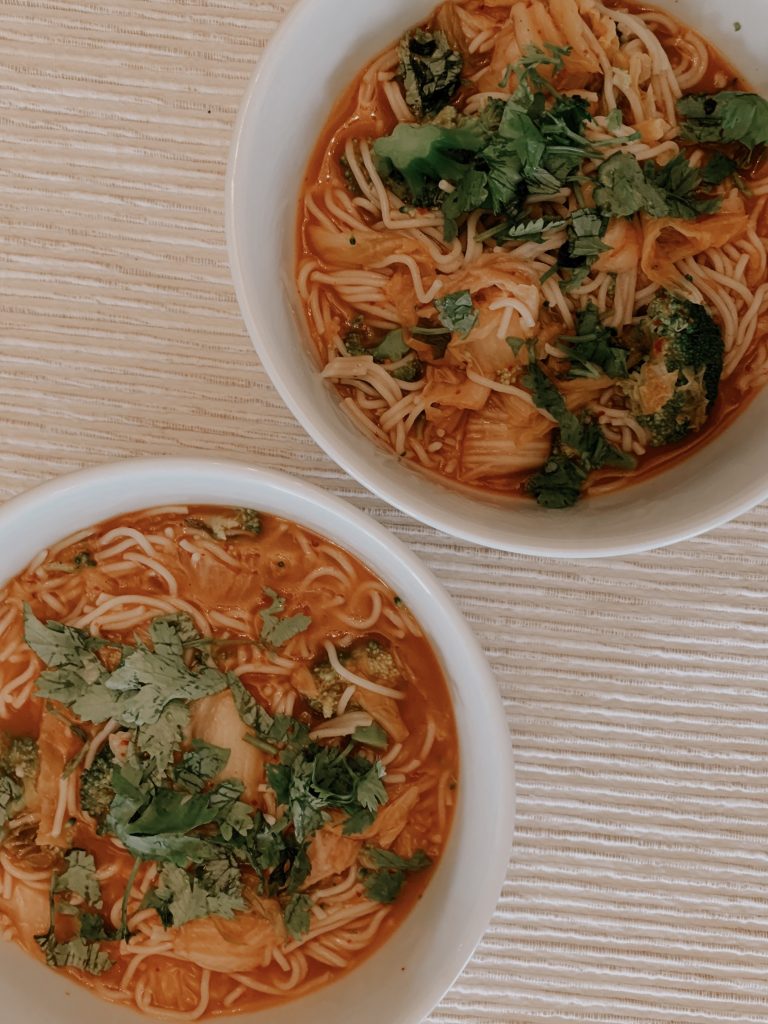
Stomach Happy Korean
Kimchi Stew Recipe

